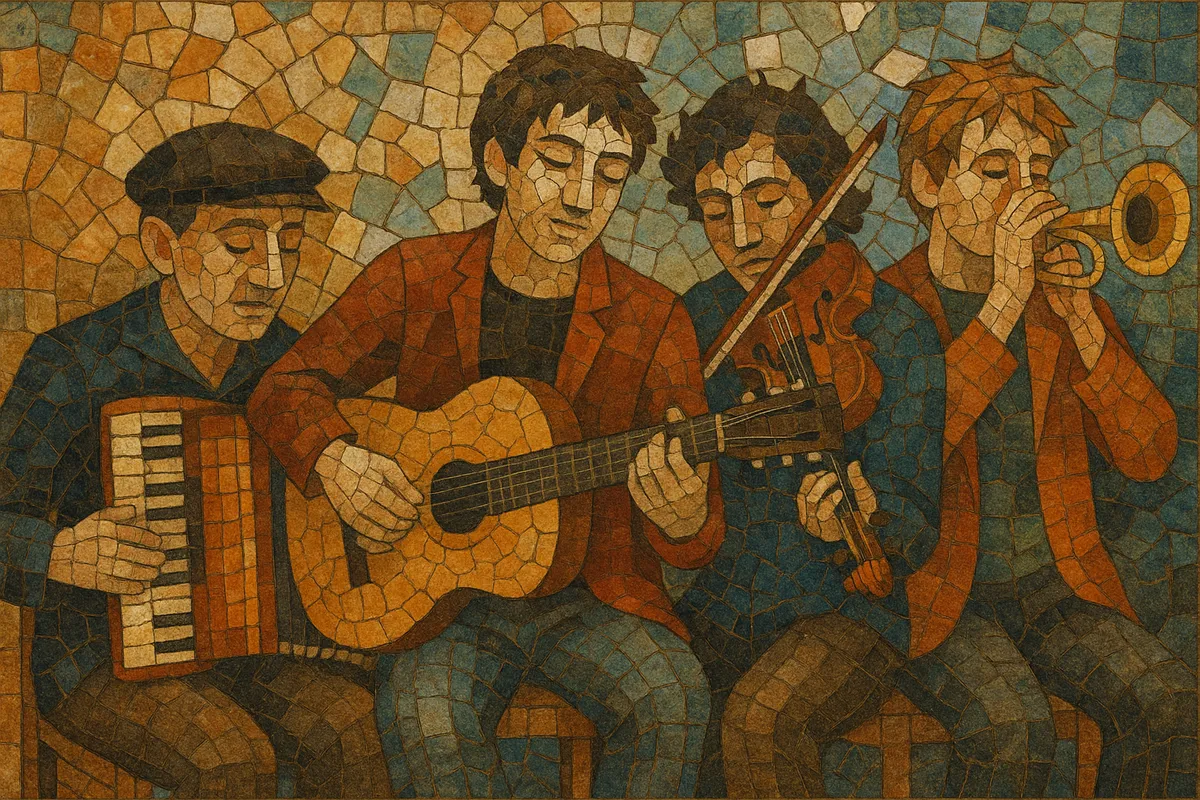Chanson alternative is a French movement that fuses the poetic, narrative spirit of traditional chanson with the energy and edge of alternative rock, punk, ska, and folk.
It favors acoustic timbres (accordion, acoustic guitar, violin, brass) alongside a rock rhythm section, and often carries a street‑performance, café‑concert feel. Lyrics are central: witty, politically engaged, satirical, and tender by turns, delivered with strong personality and clear diction.
Musically it mixes waltzes and musette colors with offbeat ska/reggae grooves and straightforward rock backbeats, creating songs that are both convivial and socially conscious.
Chanson alternative arose in France in the mid‑to‑late 1980s as a grass‑roots response to polished variété and mainstream rock. Artists and collectives drew on the literary focus of classic chanson while embracing DIY ethics, punk’s urgency, and the cosmopolitan grooves circulating in French cities. Independent circuits of cafés‑concerts, squats, and small venues—along with activist and community festivals—provided the ecosystem for bands to develop their sound.
In the 1990s, the style reached a wider public. Groups blended French poetic songcraft with rock, ska/reggae, musette, and worldbeat, often using accordion and brass next to guitars and drums. Labels and collectives helped document the scene, and national festivals gave it a platform. Bands achieved radio play without sacrificing the lyrical bite and communal sing‑along energy that defined the movement.
By the 2000s, chanson alternative had shaped the aesthetics of the “nouvelle chanson française” and influenced French indie pop and folk‑leaning acts. Its hallmarks—story‑driven lyrics, acoustic‑electric hybrids, and socially aware themes—remain audible in contemporary francophone song, from busking‑ready ensembles to theater‑influenced projects that keep the café‑concert spirit alive.


